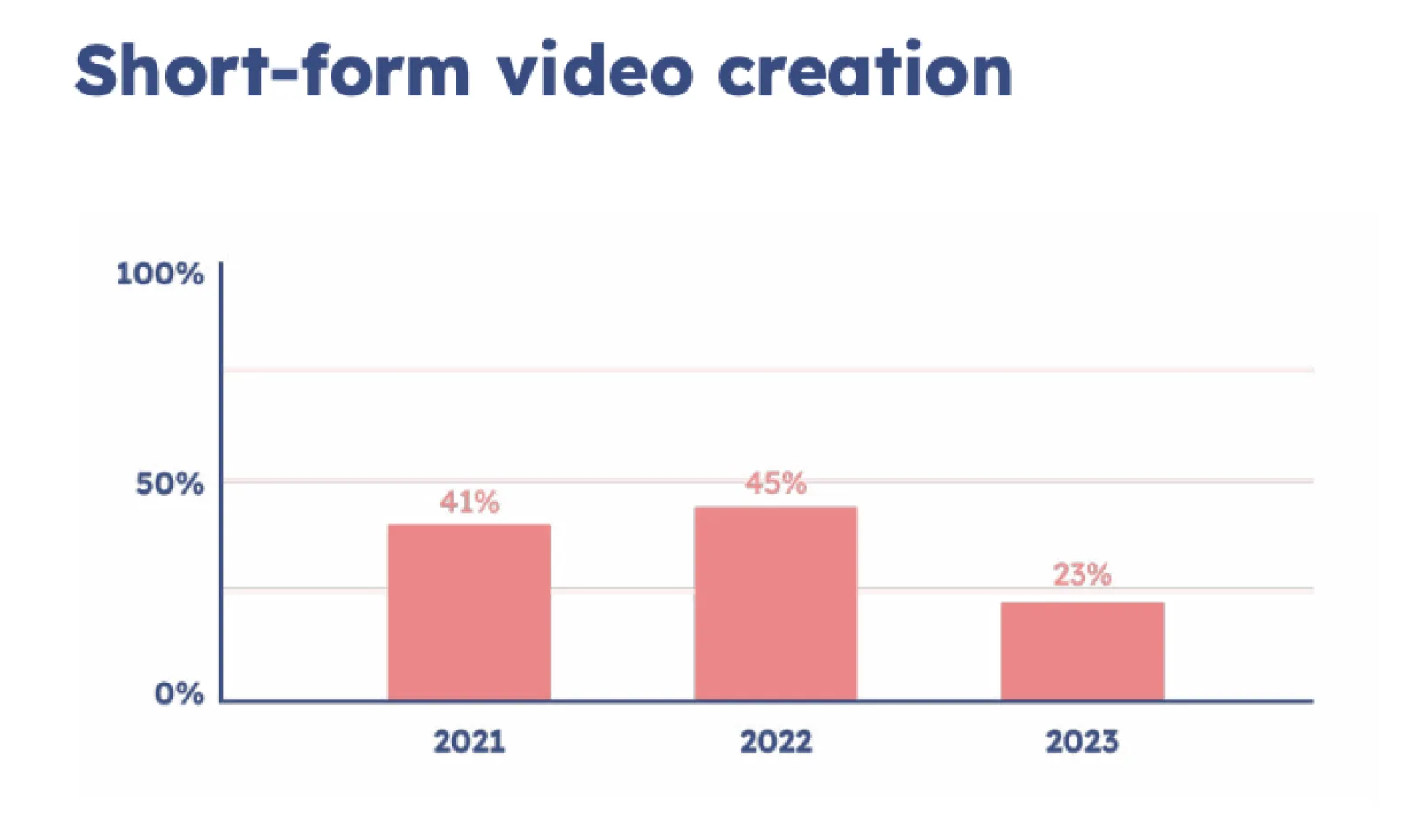In this Article
TikTok trends change fast, and a ban in the U.S. would be the biggest shakeup yet. Before you panic, the app isn’t going away tomorrow. But there are steps you can take today to help future-proof your creator business.
Here’s what you need to know about the potential United States TikTok ban.
TikTok’s future and its potential ban in the United States
You’ve read comments and seen articles about a potential TikTok ban, but what does it really mean?
TL;DR: A bill made its way through the U.S. government that requires TikTok’s Chinese parent company, ByteDance, to sell its stake to avoid being banned in U.S. app stores. The ban could go into effect in early 2025, unless ByteDance can bring the case to court.
Why do they want to ban TikTok?
ByteDance, a Chinese company, owns a controlling stake in TikTok. Discussions about data collection on TikTok have been brewing for a few years since ByteDance may be subject to Chinese national security laws that require them to assist China in intelligence gathering.
American lawmakers, law enforcement agencies, and intelligence officials are concerned about massive amounts of data ending up in the hands of the Chinese government or that China could influence ByteDance to boost or suppress specific topics.
However, TikTok adamantly denies that it has ever shared—or been asked to share—U.S. user data with the Chinese government.
Is the TikTok ban just in the United States?
Sort of. The potential American TikTok ban has been in the news lately, but some countries have already banned it or limited its use. For example, in Australia, Canada, France, and Belgium, TikTok is not allowed on government-issued devices.
Can anything save TikTok?
TikTok has 170 million users in the United States, about half the country’s population. The bill that moved through the House of Representatives, Congress, and President Biden’s desk gives TikTok a path forward— if they sell. ByteDance has 9-12 months to divest TikTok and its algorithm, or the app will disappear from U.S. app stores.
However, ByteDance plans to take the issue to court. TikTok shares the same algorithm as ByteDance’s other companies, meaning ByteDance owns its intellectual property license. If ByteDance exhausts its legal options, it would sooner shut down the app in the U.S. than hand over the algorithm.
When will the TikTok app go away?
The countdown is on with the TikTok bill, but the process is far from over. ByteDance plans to challenge the bill in court and has no intention of selling. The process could take years if TikTok obtains a preliminary injunction to halt the forced sale. If TikTok can’t bring the case to court, the TikTok ban will go into effect in early 2025.
How TikTok’s potential ban may impact the Creator Economy
A TikTok ban would be disappointing for everyone who loves to scroll, but the platform also has 7 million businesses.
If TikTok leaves the American market, creators could lose their audiences and take a hit to their income. For creators who have invested years into the platform, the loss could devastate their business if they don’t prepare now.
In the past few years, creators have been buzzing about starting to use TikTok, but the reality hasn’t been worth it for some. Our 2024 State of the Creator Economy Report found that the rate of creators making short-form videos cut in half between 2022 and 2023.

Short-form video creation rose slightly in the creator economy from 2021 to 2022 but then fell in half the following year
The dip in creators focusing on short-form videos could be related to the platform—only 2% of creators see the best engagement on TikTok vs. 27% of creators getting the best engagement through their email list (the top channel).
The ever-evolving algorithm also contributes to challenges. Thom Gibson, lead social media strategist for Kit, shared that, “More so than any other platform, TikTok is very trend-based. It has its own kind of culture that you have to be tapped into in order to grow in a way you don’t see on platforms like Instagram Reels or YouTube Shorts.”
The transition away from TikTok could hurt creators, but there are ways to pivot and protect your business.
What creators can do until TikTok’s future is decided
A U.S. TikTok ban could fall into place in the future, but you have a business to run today. Here’s what you should do to grow your audience and prepare for the potential TikTok ban.
Step #1: Branch out into alternative platforms
There are plenty of other platforms for creators, even if you still want to focus on short-form content.
If you rely on TikTok, try branching out to YouTube Shorts and Instagram Reels. YouTube Shorts has 2 billion global users, and a similar number use Instagram Reels each month.

Tailor your content to each channel
TikToks, Shorts, and Reels are all short videos, but they have different trends and algorithms. Start by treating the content the same and cross-posting your videos, but then try to learn what your audience prefers on each.
Go for engagement first
Your social media videos can be a sales tool, but they shouldn’t always feel like a sales pitch. Instead, focus on getting audience engagement—comments, shares, and followers—to direct to your sales funnels. Think of your video marketing strategy as a conversation where you share yourself and your knowledge.
Don’t bother with fancy equipment—be yourself
Emotional appeal captured on a propped-up iPhone is more engaging than a generic, cinematic shot.
People want to see and feel that you are a human just like them, so you don’t need to stress over perfection. Building a community means taking people with you on the journey so they feel like they know you. Even if you’re the expert, you should feel like someone they could know.
Have fun with it
Social media should be fun! Choose a trend that speaks to you, like a popular song, challenge, dance, or video editing structure. You don’t have to choose every trend, but find a creative way to participate and add free value related to your business.
…but you don’t have to be funny to succeed
Some of the most popular TikToks and Reels are the funniest. But a lot of entrepreneurs and creators think they can’t be successful doing this because they’re not ‘funny.’
Educational, relevant content doesn’t have to be funny to succeed. If you create great content that helps your audience and makes it convenient for them, it will bring results.
Step #2: Channel your TikTok followers to your other platforms
You can start making short-form videos on other platforms, but your audience might not automatically follow you over. Let them know you plan to be more active on other platforms, and then give them reasons to follow you there, like:
- Teasing a content series on TikTok that you’ll post on YouTube
- Posting a process video on TikTok and then sharing the results on Instagram
- Putting your other social media links in a TikTok bio landing page
- Asking TikTok followers to send you questions and then cross-post a Q+A on Instagram and TikTok
- Posting TikToks with cliffhanger content plus an end screen to watch more on your other platforms
Don’t sweat it too much if your entire TikTok audience doesn’t immediately follow you to another platform—it’s not easy to break people away from their current app. Plus, you can still be successful with a small audience.
Step #3: Encourage your TikTok audience to sign up for your newsletter
Building repeatable income as a creative starts with sharing your voice, knowledge, and value with your community. But you don’t want to completely rely on a platform you don’t control.
The most important step to take before the TikTok ban is to set up an email list. An email list gives you a direct line of communication to your audience, no matter how algorithms change or social media apps evolve. It’s also the perfect place to promote your affiliate links or sell your products.
While half as many creators made short-form videos in 2023 as the previous year, emails and newsletters were the top creative output. In the same time frame that creators moved away from TikTok, the number of emails that creators sent rose 70%.

Emails and newsletters were the most common type of content creators made in 2023
Combining social media and email marketing gives you the best of both worlds—the audience discovery of social media and the engagement and sales of email.
Here’s your blueprint of how to direct your TikTok audience to your email list to prepare for the potential TikTok ban:
- Create a free incentive to send to email subscribers
- Build a landing page to collect signups
- Put a link to your lead magnet sign-up page in your TikTok bio
- Create videos related to the lead magnet
- Watch your email list grow
For example, if you’re a food content creator, you could plan a new TikTok series about your favorite quick dinner recipes.
Each time you make a video showing how you make the meal, tell the audience that there’s a link in your bio to get a free cookbook with all the written recipes and a grocery shopping list to make the meal plan themselves.
With this strategy, you still make valuable short-form video content while building your audience away from the algorithms.
How to use Kit to move your audience off TikTok
Prepare for the TikTok ban with a free Kit account.
Our landing page builder (and beautiful templates) give followers a place to sign up for your lead magnet, and you don’t even need to have your own website domain set up.
Each time a subscriber fills out the form on your landing page, they automatically receive the lead magnet, and you gain an email subscriber.
Once you’re ready to take your email list to the next level, you can use automations to welcome new subscribers and promote products. You can even use Kit Commerce to sell products and services online.
Learn more about our creator tools and sign up for a free account.





